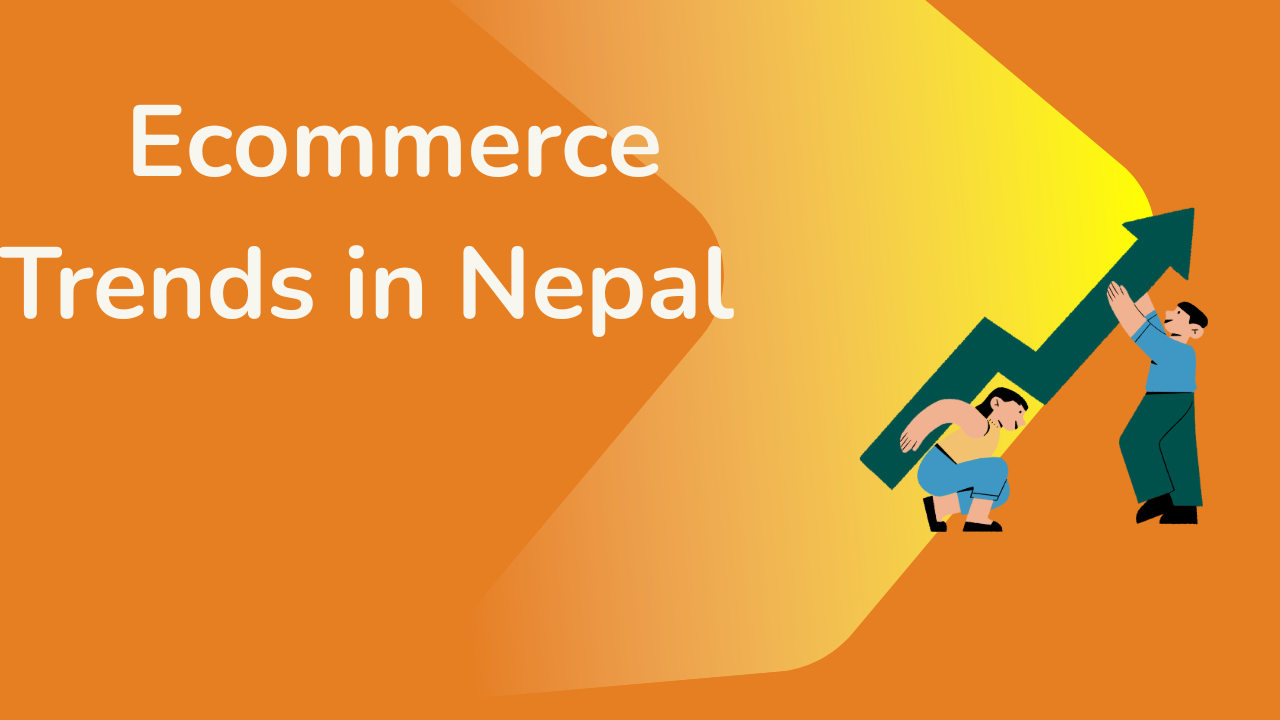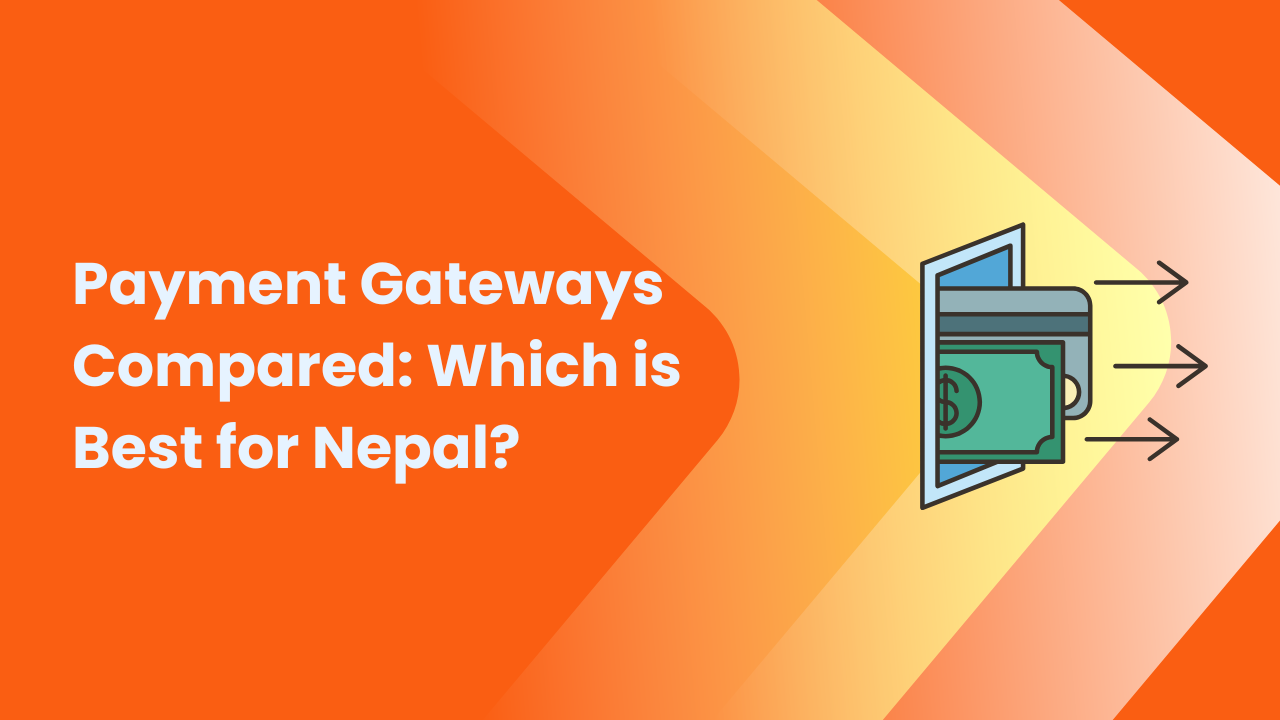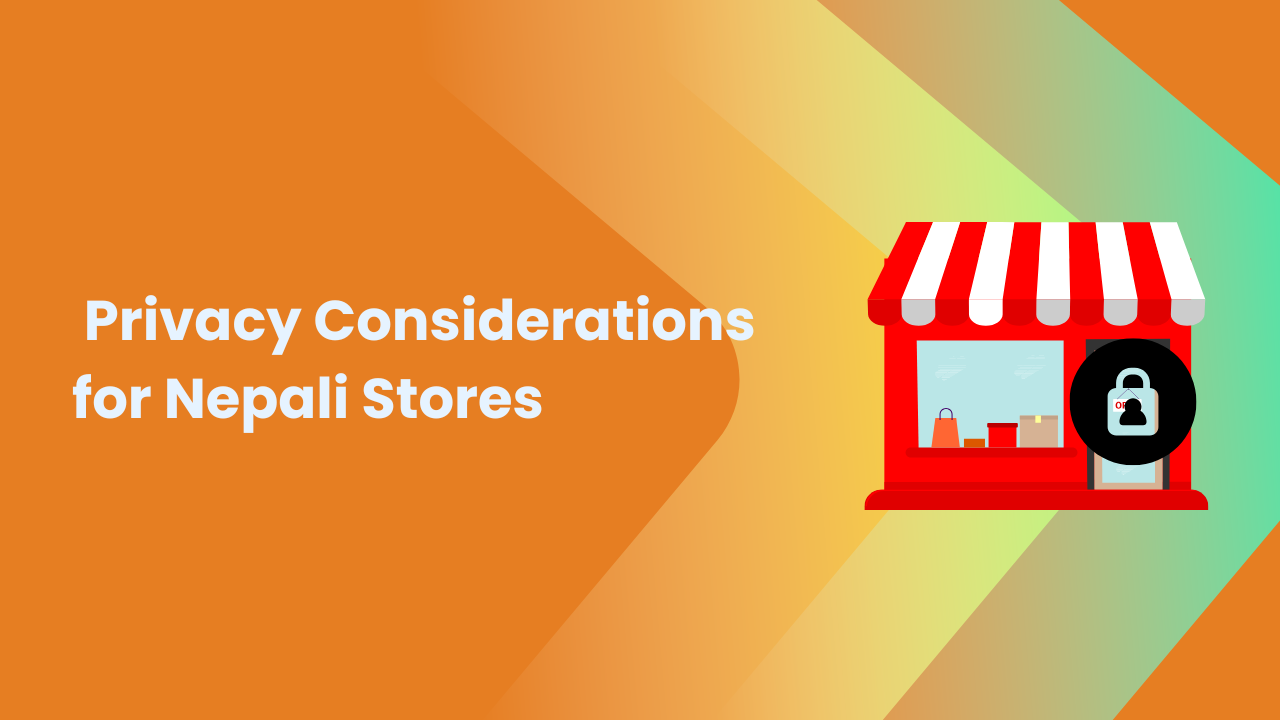Share this Article
In the digital era, the heart of every online business lies in the ability to accept and process payments securely, quickly, and conveniently. Whether you are an e-commerce entrepreneur, a service provider, or a freelancer, choosing the right payment gateway in Nepal can make or break your customer experience. With the rapid growth of Nepal’s digital economy and the increasing adoption of e-wallets, online banking, and QR payments, understanding which payment solution best suits your business needs is no longer optional — it’s essential.
Nepal’s payment landscape has undergone a major transformation over the last decade. Once heavily reliant on cash-on-delivery (COD), the country has seen a massive surge in cashless transactions due to mobile wallets, banking APIs, and the efforts of Nepal Rastra Bank to digitize the economy. From small local shops to large-scale e-commerce platforms, the demand for efficient online payment systems has never been greater. But with options like eSewa, Khalti, IME Pay, ConnectIPS, and others in the mix, the question remains: which one is truly the best for Nepal?
The State of Digital Payments in Nepal
Nepal’s journey towards a cashless economy is both promising and challenging. The digital payment revolution began with mobile wallets such as eSewa and Khalti, which introduced simple ways for users to send and receive money, pay bills, and shop online. Over time, other platforms like IME Pay and CellPay joined the ecosystem, providing users with alternative payment experiences. Additionally, ConnectIPS — operated by Nepal Clearing House Limited — became the official banking-level infrastructure enabling interbank transfers and payments directly through linked bank accounts.
Despite these developments, digital payments in Nepal still face certain limitations. Many rural areas lack reliable internet connectivity, and older generations are often hesitant to switch from cash. Moreover, some merchants remain wary of online transactions due to issues of fraud, chargebacks, and customer disputes. Yet, the advantages of going digital are undeniable — lower operational costs, wider market reach, faster transactions, and improved transparency. As more people adopt online shopping and government services move toward e-payment systems, every business owner in Nepal must understand how to integrate and choose the right payment gateway.
What is a Payment Gateway and Why It Matters
A payment gateway acts as a bridge between the customer, the merchant, and the financial institutions involved in the transaction. When a customer makes a payment on a website or app, the gateway securely transmits the data to the payment processor, verifies details with the bank, and confirms whether the transaction is approved or declined. This all happens within seconds, ensuring a seamless customer experience.
In Nepal, payment gateways handle not only debit and credit card transactions but also mobile wallet and bank transfer payments. The best gateways support multiple payment methods, provide robust APIs for integration, offer quick settlements to merchants, and comply with local regulations set by Nepal Rastra Bank (NRB). Security is a key factor — the gateway must follow strict encryption standards, anti-fraud measures, and KYC compliance to prevent misuse or money laundering. For businesses, a reliable gateway reduces risks, improves trust, and enhances customer satisfaction.
Major Payment Gateways in Nepal
Nepal has several active payment gateways and wallet providers. Each offers unique features, integration options, and service levels. The leading names in the domestic payment market are eSewa, Khalti, IME Pay, and ConnectIPS. Let’s explore each of these in detail.
eSewa
eSewa is Nepal’s first and most widely recognized digital wallet. Founded in 2009, it pioneered online and mobile payments in Nepal long before e-commerce became mainstream. It allows users to pay utility bills, recharge mobile phones, transfer funds, purchase movie tickets, book flights, and shop online from thousands of partnered merchants.
For businesses, eSewa offers a merchant account that allows integration into websites, mobile apps, and POS systems. Merchants can accept payments from eSewa users instantly and receive settlements in their bank accounts. The platform’s widespread popularity among consumers makes it a must-have option for online businesses in Nepal. It supports QR-based payments, API integrations, and even custom checkout flows for e-commerce sites.
The advantages of eSewa include brand familiarity, reliability, and wide user adoption. However, its fees and settlement times may vary depending on the merchant type and transaction volume. eSewa’s customer support is generally efficient, but integration for small startups may require developer assistance. For local businesses, though, it remains one of the most dependable and user-friendly payment solutions.
Khalti
Khalti entered the digital payment scene in 2017 and quickly became one of the most prominent competitors to eSewa. It provides a clean interface, easy navigation, and a wide range of payment services such as mobile top-ups, utility bills, government fees, insurance, and online shopping payments. Khalti’s merchant API allows developers to integrate payment collection into websites, mobile apps, and subscription systems.
What sets Khalti apart is its focus on innovation and partnerships. It is known for offering promotional discounts, cashback offers, and affiliate campaigns that attract both merchants and customers. The platform also supports multiple languages and has expanded its services through the “Khalti Smart Pay” system. Merchants benefit from flexible API documentation, responsive support, and a growing network of users who prefer Khalti over traditional payment methods.
From a business perspective, Khalti’s biggest strength lies in its modern technology stack and its ability to integrate seamlessly with e-commerce platforms. However, as with all payment gateways, merchants should review Khalti’s transaction fees, refund policies, and settlement timelines carefully to ensure they align with business cash flow needs.
IME Pay
IME Pay, operated by IME Digital, combines wallet payments with remittance integration — making it particularly valuable for users who receive funds from abroad. Its ecosystem connects IME’s traditional remittance business with modern digital transactions, allowing users to send money across Nepal, pay bills, and shop online.
For merchants, IME Pay provides online payment solutions that can be embedded into websites and apps. The platform supports QR codes, merchant dashboards, and analytics for monitoring transactions. One of IME Pay’s strongest features is its presence in rural areas due to IME’s established remittance network, which helps bridge the digital divide between urban and rural consumers.
Businesses that target nationwide customers, including those in remote districts, can benefit from integrating IME Pay because it enables easier access to customers outside major cities. However, its online payment interface and documentation may not be as refined as eSewa’s or Khalti’s, though its growing adoption makes it a solid contender in Nepal’s payment gateway market.
ConnectIPS
ConnectIPS is Nepal’s national payment platform, developed by Nepal Clearing House Limited (NCHL). Unlike mobile wallets, it connects directly with users’ bank accounts and allows them to make instant interbank transfers, pay bills, and conduct online purchases through linked accounts. It supports over 60 commercial and development banks and financial institutions in Nepal, making it one of the most comprehensive systems for bank-based digital payments.
For businesses, ConnectIPS is particularly attractive because it eliminates intermediaries and provides secure, bank-to-bank settlements. Merchants can integrate ConnectIPS into their websites or platforms to allow direct payments from customers’ accounts. The platform is regulated and supported by Nepal Rastra Bank, ensuring strong compliance and reliability. It is also favored for larger payments where wallet transaction limits may be restrictive.
The primary limitation of ConnectIPS is that it requires users to have online banking credentials, which may not be common among all customers. However, as digital literacy and banking penetration grow, ConnectIPS is emerging as a preferred choice for many professional and enterprise-level businesses in Nepal.
Comparing the Gateways
When comparing eSewa, Khalti, IME Pay, and ConnectIPS, several factors come into play — user base, integration options, fees, settlement time, and compliance. eSewa leads in terms of market share and user trust, while Khalti provides strong technological innovation and better customer engagement. IME Pay brings remittance-linked benefits and rural reach, whereas ConnectIPS excels in direct bank transactions and high-value payments.
For small businesses or startups, using at least one wallet-based gateway like eSewa or Khalti is highly recommended because they are widely accepted by customers. For medium and large enterprises, integrating ConnectIPS alongside wallet gateways ensures flexibility and coverage across all payment preferences.
Regulatory Oversight and Security Considerations
Payment gateways in Nepal operate under the regulatory supervision of Nepal Rastra Bank (NRB). The NRB ensures that all Payment Service Providers (PSPs) and Payment System Operators (PSOs) comply with the Payment and Settlement Bylaw 2072 and related directives. These rules ensure data security, transparency, and financial stability in the digital payment ecosystem.
Security is another critical element. Gateways must use encryption standards, SSL certification, tokenization, and two-factor authentication to prevent data breaches. Merchants are advised to partner only with NRB-licensed gateways to ensure their transactions are legal and protected under national laws. Regular audits, anti-money laundering (AML) compliance, and know-your-customer (KYC) procedures are mandatory for all operators.
For customers, these regulations help build trust in online transactions. For businesses, compliance with NRB guidelines ensures smooth operations without regulatory penalties. It is also important for merchants to maintain their own data privacy policies and transparent refund mechanisms to avoid disputes or chargeback issues.
International Gateways: PayPal and Stripe
Many Nepali businesses aspiring to sell internationally often ask about PayPal and Stripe. Unfortunately, Nepal does not yet have full PayPal receiving support. Nepali users can use PayPal for outbound payments but not to receive funds directly into local bank accounts. Stripe, on the other hand, is unavailable for businesses registered in Nepal. However, Nepali entrepreneurs who operate foreign-registered companies can use Stripe through those entities.
These limitations mean that businesses targeting international customers need alternative arrangements. One option is to register a company abroad in a Stripe- or PayPal-supported country. Another is to use services like Payoneer or Wise to receive cross-border payments legally. It’s crucial to comply with foreign exchange regulations under NRB and the Ministry of Finance when dealing with international revenues.
Choosing the Right Gateway for Your Business
The best payment gateway for your business depends on your customer base, transaction volume, and technical capability. If your customers are primarily domestic, integrating local wallets and ConnectIPS is sufficient. For large-scale enterprises, having multiple payment options can reduce drop-offs and increase conversions. Always consider factors such as transaction fees, settlement times, refund policies, and ease of integration before making a final choice.
Testing is also key. Many providers offer sandbox environments where businesses can simulate payments before going live. It’s advisable to test different gateways and compare user experience, success rates, and customer feedback.
The Future of Digital Payments in Nepal
Nepal’s digital payment ecosystem is rapidly evolving. With government initiatives promoting electronic transactions, QR interoperability projects, and the rise of fintech startups, the coming years will bring even more innovation. Open banking, card-based payments, and integrated business operating systems will soon become part of everyday commerce.
The future will likely see stronger regulatory frameworks, improved API interoperability among wallets and banks, and cross-border payment facilities that connect Nepali merchants to international markets. As consumer confidence grows and infrastructure improves, digital payments will become the backbone of Nepal’s new digital economy.
Conclusion
The right payment gateway can transform how a business operates, enhancing convenience, trust, and revenue flow. In Nepal, eSewa, Khalti, IME Pay, and ConnectIPS lead the way in digital payments, each offering unique advantages for different types of merchants. While global options like PayPal and Stripe remain limited, domestic platforms have matured significantly to handle growing demands.
As Nepal continues its digital transformation, every business must understand the technical, legal, and practical sides of online payments. Choosing the right gateway is not just a technical decision — it’s a strategic one that shapes the customer experience and business growth. In this fast-changing environment, being informed and proactive ensures that your business stays ahead in Nepal’s digital economy.
Categories:
E-commerce Tips & Tutorials
Tags:
Online Store in Nepal
,
local businesses
,
e-commerce app
,
Small Business
,
strong brand
,
E-commerce







